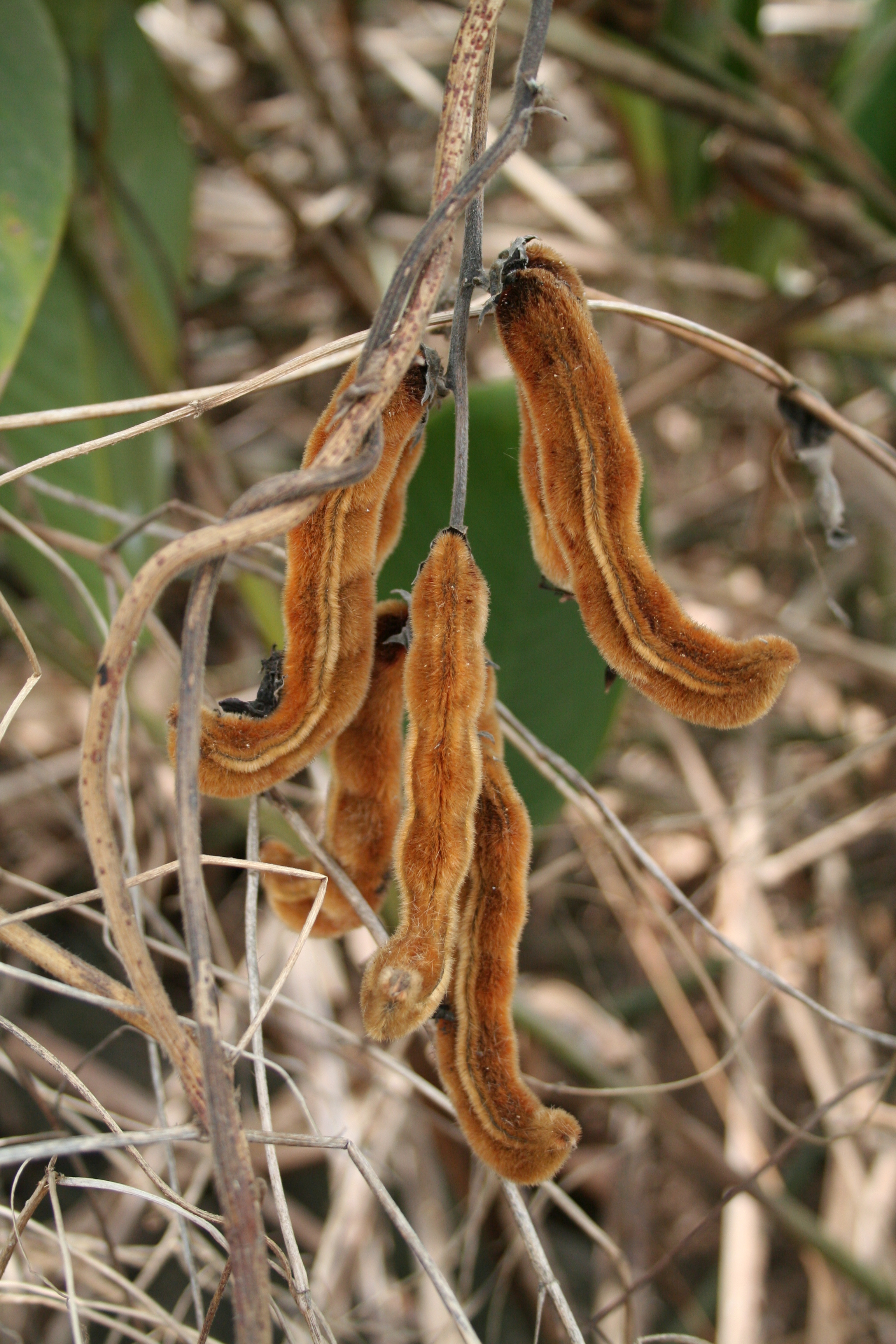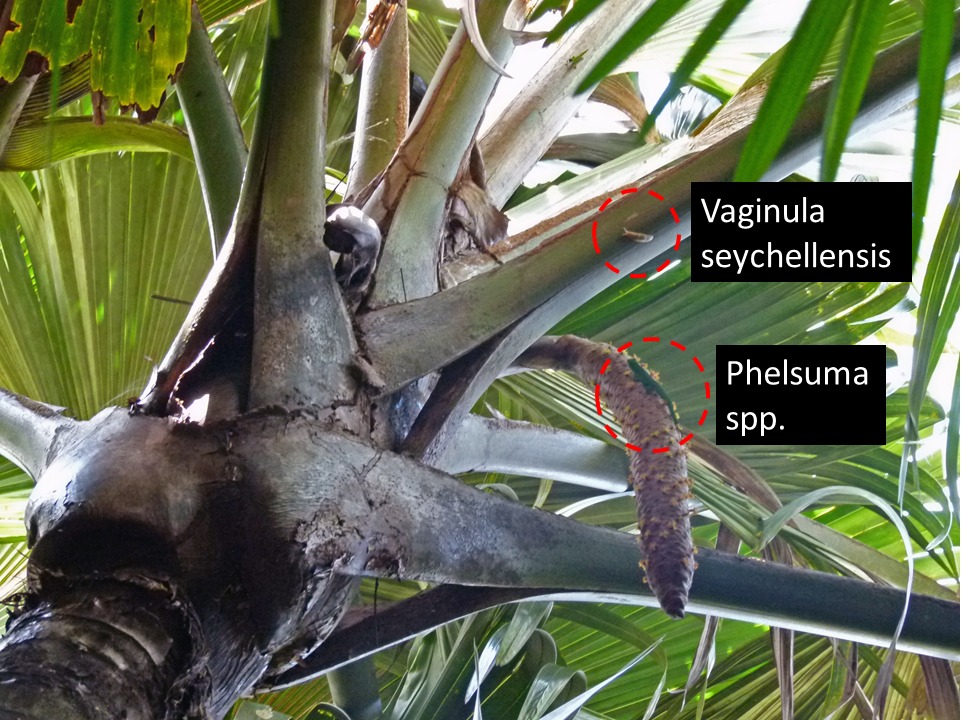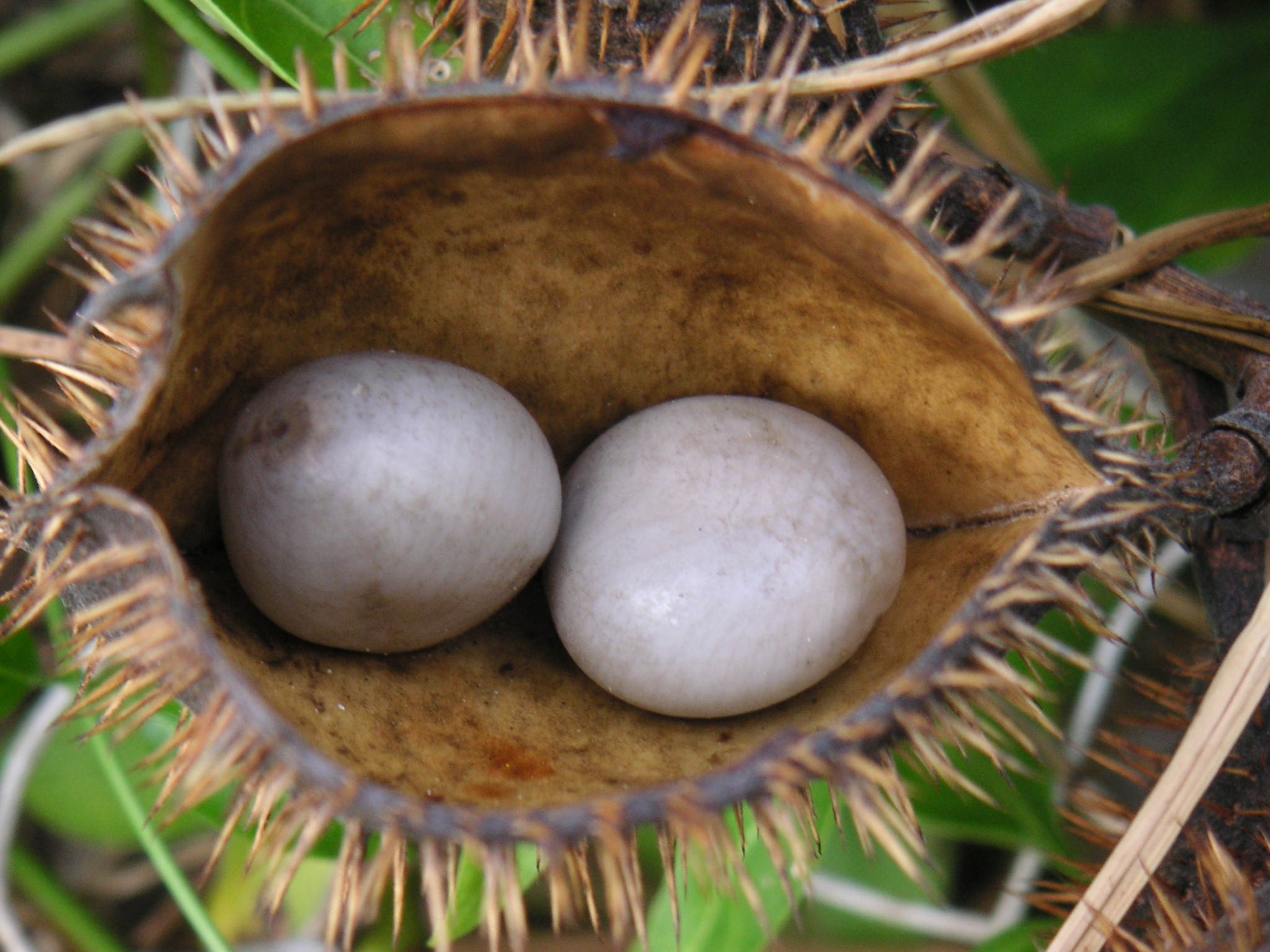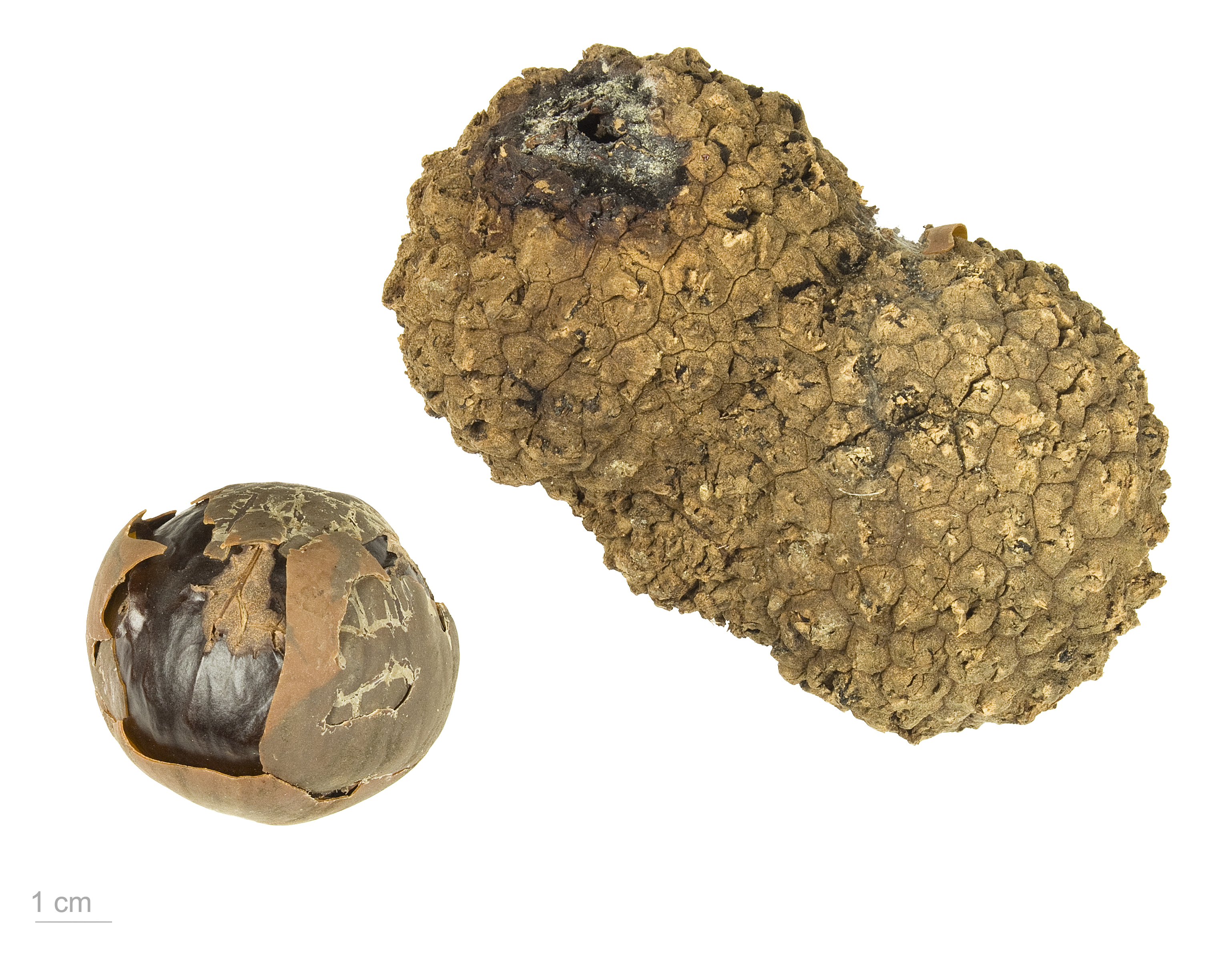|
Sea-bean
__NOTOC__ Drift seeds (also sea beans) and drift fruits are seeds and fruits adapted for long-distance dispersal by water. Most are produced by tropical trees, and they can be found on distant beaches after drifting thousands of miles through ocean currents. This method of propagation has helped many species of plant such as the coconut colonize and establish themselves on previously barren islands. Consequently, drift seeds and fruits are of interest to scientists who study these currents. In botanical terminology, a drift fruit is a kind of diaspore, and drift seeds and fruits are disseminules. Sources of drift seeds * ''Caesalpinia bonduc'' – grey nickernut * ''Caesalpinia major'' – yellow nickernut * ''Carapa guianensis'' – crabwood (New World tropics) * ''Entada gigas'' – seaheart, (New World tropics) * ''Entada rheedii'' – snuff box sea bean, from the tropics of the Indian Ocean * ''Erythrina fusca'' – bucayo (pantropical) * ''Erythrina variegata'' – ti ... [...More Info...] [...Related Items...] OR: [Wikipedia] [Google] [Baidu] |
Mucuna
''Mucuna'' is a genus of around 100 accepted species of climbing lianas (vines) and shrubs of the family Fabaceae: tribe Phaseoleae, typically found in tropical forests. The leaves are trifoliolate, alternate, or spiraled, and the flowers are pea-like but larger, with distinctive curved petals, and occurring in racemes. Like other legumes, ''Mucuna'' plants bear pods. They are generally bat-pollinated and produce seeds that are buoyant sea-beans. These have a characteristic three-layered appearance, appearing like the eyes of a large mammal in some species and like a hamburger in others (most notably '' M. sloanei'') and giving rise to common names like deer-eye beans, donkey-eye beans, ox-eye beans, or hamburger seed. The name of the genus is derived from ''mucunã'', a Tupi–Guarani word for these species. Ecology Some ''Mucuna'' species are used as food plants by caterpillars of Lepidoptera. These include ''Morpho'' butterflies and the two-barred flasher (''Astraptes fulger ... [...More Info...] [...Related Items...] OR: [Wikipedia] [Google] [Baidu] |
Lodoicea
''Lodoicea'', commonly known as the sea coconut, coco de mer, or double coconut, is a monotypic genus in the palm family. The sole species, ''Lodoicea maldivica'', is endemic to the islands of Praslin and Curieuse in the Seychelles. It has the biggest seed in a plant. It formerly also was found on the small islets of St Pierre, Chauve-Souris, and Ile Ronde (Round Island), all located near Praslin, but had become extinct there for a time until recently reintroduced. Taxonomy The name of the genus ''Lodoicea'' is given by Philibert Commerson, it may be derived from ''Lodoicus'', a Latinised form of ''Louis'' (typically '' Ludovicus''), in honour of King Louis XV of France. Other sources say that ''Lodoicea'' is from Laodice, the daughter of Priam and Hecuba. ''Lodoicea'' belongs to the Coryphoideae subfamily and tribe Borasseae. Borasseae is represented by four genera in Madagascar and one in Seychelles out of the seven worldwide. They are distributed on the coastlands surroun ... [...More Info...] [...Related Items...] OR: [Wikipedia] [Google] [Baidu] |
Nickernut
Nickernuts or nickar nuts are smooth, shiny seeds from tropical Fabaceae, leguminous shrubs, particularly ''Guilandina bonduc'' and ''Guilandina major'', both known by the common name warri tree. ''C. bonduc'' produces gray nickernuts, and ''C. major'' produces yellow. Accordingly, these species are locally known in the Caribbean as "grey nickers" and "yellow nickers". The word ''nicker'' probably derives from the Dutch language, Dutch word "knikker", meaning marble (toy), marble.''West Word'March 2002 retrieved 1 June 2010. In the Caribbean, nickernuts are used to play mancala games such as oware. The nickernut is marble-like and good for other uses, such as for jewellery; it is also sometimes ground up to make a medicinal tea. The seeds are often found on the beach, and are also known as sea pearls or eaglestones. ''Guilandina'' and ''Merremia tuberosa, Merremia'' seeds sometimes drift long distances. In 1693 James Wallace (minister), James Wallace referred to them being often ... [...More Info...] [...Related Items...] OR: [Wikipedia] [Google] [Baidu] |
Ormosia
''Ormosia'' is a genus of legumes (family Fabaceae). The more than 100 living species, mostly trees or large shrubs, are distributed throughout the tropical regions of the world, some extending into temperate zones, especially in East Asia. A few species are threatened by habitat destruction, while the Hainan ormosia (''Ormosia howii'') is probably extinct already. Plants in this genus are commonly known as horse-eye beans or simply ormosias, and in Spanish by the somewhat ambiguous term ''"chocho"''. The scientific name ''Ormosia'' is a ''nomen conservandum'', overruling ''Toulichiba'' which is formally rejected under the ''International Code of Nomenclature for algae, fungi, and plants''. The seeds of these plants are poisonous if eaten, but often look pretty, with bright colors and decorative patterns reminiscent of an eye; the common name "horse-eye beans" refers to these seeds. They resemble the seeds of ''Abrus'', snoutbeans (''Rhynchosia''), and ''Adenanthera'', but are ... [...More Info...] [...Related Items...] OR: [Wikipedia] [Google] [Baidu] |
South America
South America is a continent entirely in the Western Hemisphere and mostly in the Southern Hemisphere, with a relatively small portion in the Northern Hemisphere at the northern tip of the continent. It can also be described as the southern subregion of a single continent called America. South America is bordered on the west by the Pacific Ocean and on the north and east by the Atlantic Ocean; North America and the Caribbean Sea lie to the northwest. The continent generally includes twelve sovereign states: Argentina, Bolivia, Brazil, Chile, Colombia, Ecuador, Guyana, Paraguay, Peru, Suriname, Uruguay, and Venezuela; two dependent territories: the Falkland Islands and South Georgia and the South Sandwich Islands; and one internal territory: French Guiana. In addition, the ABC islands of the Kingdom of the Netherlands, Ascension Island (dependency of Saint Helena, Ascension and Tristan da Cunha, a British Overseas Territory), Bouvet Island ( dependency of Norway), Pa ... [...More Info...] [...Related Items...] OR: [Wikipedia] [Google] [Baidu] |
Manicaria
''Manicaria'' is a palm genus which is found in Trinidad, Central and South America. It contains two recognized species: #''Manicaria martiana'' Burret – Colombia, northwestern Brazil #''Manicaria saccifera'' Gaertn. – Central America, Trinidad, Venezuela, Colombia, Ecuador, Peru, northwestern Brazil It has one of the largest known leaves in the plant kingdom (up to 8 metres in length). ''Manicaria'' thrives in swamps or estuarine areas where river meets ocean. In the Tortuguero region of Costa Rica, where ''Manicaria saccifera'' is plentiful, local people know this palm as "Palma Real", or "Royal Palm". Its heavy, large leaves are valued over other palm species as the best material for roof thatching. ''Manicaria saccifera'' is an obligate swamp species, and as most other palms, it thrives in the wet, humid conditions of tropical lowland forests. Myers (1981) states "In the humid environments of the neo-tropics there is an increase in the abundance of understory palms" ... [...More Info...] [...Related Items...] OR: [Wikipedia] [Google] [Baidu] |
Seychelles
Seychelles (, ; ), officially the Republic of Seychelles (french: link=no, République des Seychelles; Creole: ''La Repiblik Sesel''), is an archipelagic state consisting of 115 islands in the Indian Ocean. Its capital and largest city, Victoria, is east of mainland Africa. Nearby island countries and territories include the Comoros, Madagascar, Mauritius, and the French overseas departments of Mayotte and Réunion to the south; and Maldives and the Chagos Archipelago (administered by the United Kingdom as the British Indian Ocean Territory) to the east. It is the least populated sovereign African country, with an estimated 2020 population of 98,462. Seychelles was uninhabited prior to being encountered by Europeans in the 16th century. It faced competing French and British interests until coming under full British control in the late 18th century. Since proclaiming independence from the United Kingdom in 1976, it has developed from a largely agricultural society to ... [...More Info...] [...Related Items...] OR: [Wikipedia] [Google] [Baidu] |
Southeast Asia
Southeast Asia, also spelled South East Asia and South-East Asia, and also known as Southeastern Asia, South-eastern Asia or SEA, is the geographical United Nations geoscheme for Asia#South-eastern Asia, south-eastern region of Asia, consisting of the regions that are situated south of mainland China, east of the Indian subcontinent, and north-west of mainland Australia. Southeast Asia is bordered to the north by East Asia, to the west by South Asia and the Bay of Bengal, to the east by Oceania and the Pacific Ocean, and to the south by Australia (continent), Australia and the Indian Ocean. Apart from the British Indian Ocean Territory and two out of atolls of Maldives, 26 atolls of Maldives in South Asia, Maritime Southeast Asia is the only other subregion of Asia that lies partly within the Southern Hemisphere. Mainland Southeast Asia is completely in the Northern Hemisphere. East Timor and the southern portion of Indonesia are the only parts that are south of the Equator. Th ... [...More Info...] [...Related Items...] OR: [Wikipedia] [Google] [Baidu] |
Heritiera Littoralis
''Heritiera littoralis'', commonly known as the looking-glass mangrove or tulip mangrove, is a mangrove tree in the family Malvaceae native to coastal areas of eastern Africa, Asia, Melanesia and northern Australia. The common name refers to the silvery appearance of the underside of the leaves, resembling a mirror to some degree. The strong timber has uses in marine applications and elsewhere. Description ''Heritiera littoralis'' is an evergreen tree growing up to in height with very prominent, sinuous buttress roots that may be up to tall. It is usually low-branching and the crown is untidy-looking with gnarled branches. The trunk is light grey or grey-brown in appearance, smooth when young but developing vertical fissures as it ages. The leaves are spirally arranged on the branches and varyingly measure from up to , with a petiole up to long. They are oblong-elliptical to ovate-elliptical, dark green on the upper surface and the undersides are silvery-white to light b ... [...More Info...] [...Related Items...] OR: [Wikipedia] [Google] [Baidu] |
New World
The term ''New World'' is often used to mean the majority of Earth's Western Hemisphere, specifically the Americas."America." ''The Oxford Companion to the English Language'' (). McArthur, Tom, ed., 1992. New York: Oxford University Press, p. 33: "[16c: from the feminine of ''Americus'', the Latinized first name of the explorer Amerigo Vespucci (1454–1512). The name ''America'' first appeared on a map in 1507 by the German cartographer Martin Waldseemüller, referring to the area now called Brazil]. Since the 16c, a name of the western hemisphere, often in the plural ''Americas'' and more or less synonymous with ''the New World''. Since the 18c, a name of the United States of America. The second sense is now primary in English: ... However, the term is open to uncertainties: ..." The term gained prominence in the early 16th century, during Europe's Age of Discovery, shortly after the Italian explorer Amerigo Vespucci concluded that America (now often called ''the Am ... [...More Info...] [...Related Items...] OR: [Wikipedia] [Google] [Baidu] |
Tropics
The tropics are the regions of Earth surrounding the Equator. They are defined in latitude by the Tropic of Cancer in the Northern Hemisphere at N and the Tropic of Capricorn in the Southern Hemisphere at S. The tropics are also referred to as the tropical zone and the torrid zone (see geographical zone). In terms of climate, the tropics receive sunlight that is more direct than the rest of Earth and are generally hotter and wetter as they aren't affected as much by the solar seasons. The word "tropical" sometimes refers to this sort of climate in the zone rather than to the geographical zone itself. The tropical zone includes deserts and snow-capped mountains, which are not tropical in the climatic sense. The tropics are distinguished from the other climatic and biomatic regions of Earth, which are the middle latitudes and the polar regions on either side of the equatorial zone. The tropics constitute 40% of Earth's surface area and contain 36% of Earth's landmass. , the ... [...More Info...] [...Related Items...] OR: [Wikipedia] [Google] [Baidu] |
Grias Cauliflora
''Grias cauliflora'', the anchovy pear,"anchovy pear" in ''The New Encyclopædia Britannica''. Chicago: Encyclopædia Britannica Inc., 15th edn., 1992, Vol. 1, p. 378. (also called the river pear) is a fruit native to Jamaica, Central America, and Colombia. It is often found near rivers or marshes in large colonies. It grows on the evergreen tree ''Grias cauliflora'' of the Lecythidaceae (Brazil nut) family. The edible nuts grow clumped together in large, round, woody and extremely hard seed pods the size of a large grapefruit. The meat of the seed (the "nut") is very rich in oil and grows from 7 to 9 cm long and 2 to 4 cm in diameter. The tree has fragrant yellow flowers about 5 cm across and grows to a height of about 15 m (50 feet). The anchovy pear tree bears spear-shaped, glossy leaves produced in palm-like tufts that reach an average length of 90 cm. The edible, brown, berrylike fruits for which it is cultivated for pickling are not related to the commo ... [...More Info...] [...Related Items...] OR: [Wikipedia] [Google] [Baidu] |






